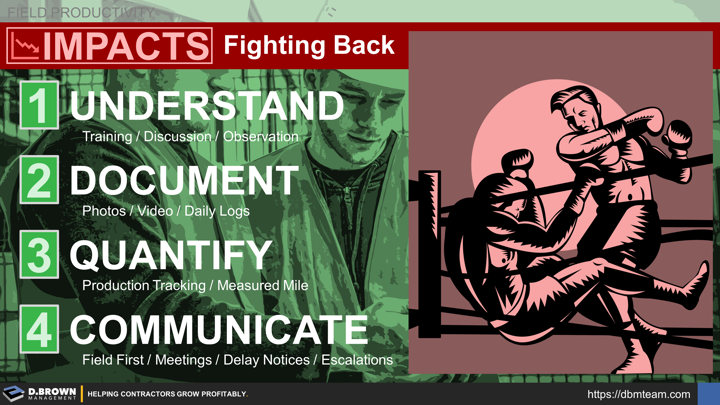Fighting back effectively against labor productivity impacts will significantly improve project outcomes including customer satisfaction if handled properly. There are four interrelated aspects to effectively fighting back.
- UNDERSTAND - Make learning part of your weekly habit and improve the power of observation on projects.
- DOCUMENT - Use all tools available to you. Focus on a level which other people can understand and learn from who are not intimately knowledgeable about the project.
- QUANTIFY - If you can’t quantify pre and post impact production, you won’t be able to communicate or resolve the impact effectively.
- COMMUNICATE - Learn to effectively make your case, to who, and when to escalate for the best negotiating results.
Remember that guaranteed way to not lose a fight is to never get into the fight to begin with. Deliberate practice of these skills over time will keep you out of the fight most of the time.

